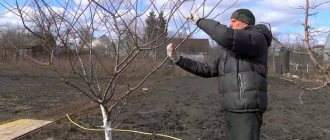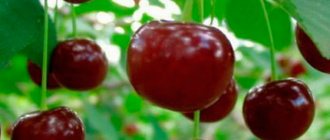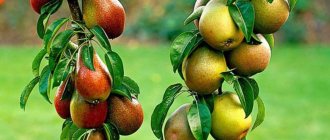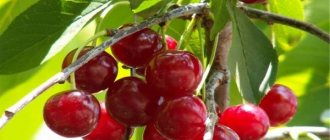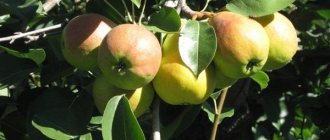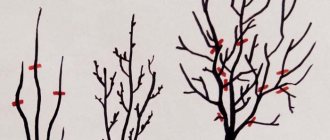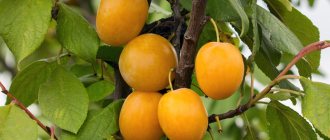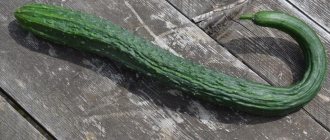Characteristics of apricot varieties
The classification of apricot varieties is rather arbitrary. However, they are divided according to several criteria. The following groups are distinguished by height and type of tree:
- short (up to 3 m);
- medium height (3–6 m);
- tall (over 6 m);
- columnar.
Apricots are also classified into several groups according to their ripening time:
- early (late June – early July);
- mid-early (July 05–15);
- mid-late (July 15–25);
- later (later July 25).
It should be noted that the classification of apricots according to ripening dates may not be the same in different regions. The same variety, depending on weather conditions, will bear fruit either earlier or later. For example, in Central Asia, apricots ripen almost a month earlier than the same varieties in Crimea.
According to the purpose of the fruit, all varieties of apricots are divided into the following:
- canteens;
- canning;
- universal;
- drying
Table varieties have low shelf life and are consumed mainly fresh. Canned varieties are more suitable than others for industrial processing, for example, for making juice, apricots in their own juice or jam. Drying varieties have increased sugar content and are used mainly for the production of dried apricots. Universal varieties can be used for any purpose.
Apricots do not have a clear classification based on the color and size of the fruit. Their color can vary from almost white to almost black. However, most varieties have bright yellow or orange fruit. The size of the fruit depends not only on the variety, but also on proper agricultural technology, weather conditions, etc. The standard division of apricot varieties by fruit size is as follows:
- very small (up to 10 g);
- small (10–20 g);
- medium (20–30 g);
- above average (31–40 g);
- large (41–60 g);
- very large (over 60 g).
Apricot is a southern plant, so the concept of frost resistance appeared only after the development of varieties suitable for cultivation in more northern regions. In the wild, there are such frost-resistant species as Manchurian apricot and Siberian apricot, and they have become the basis for the selection of cold-resistant varieties.
Possible problems when growing apricots
It happens that a farmer growing apricots in the middle zone is faced with a problem when a luxuriantly flowering tree suddenly does not produce ovaries, or does not bloom in the spring.
Why doesn't apricot bloom?
First, it should be noted that most apricot varieties produce their crops irregularly. This means that one year the tree is completely covered with fruit, and the next season there are only a few fruits hanging on it.
Possible reasons why apricots in the middle zone do not bloom on time:
- some varieties zoned in the middle zone begin to bloom not at 3, but at 6–8 years (you just have to wait);
- instead of a varietal seedling, a seedling of unknown nature was purchased;
- This variety is not suitable for the middle zone climate;
- the seedling is planted in the ground at the wrong time, in the wrong place or at the wrong time;
- the tree is frozen, sick or severely damaged by pests;
- improper care of apricots (incorrect pruning, excess fertilizer).
Warning! The right choice of variety, seedling and adherence to the rules of agricultural technology developed for the middle zone climate will help to avoid most of the listed problems.
Winter-hardy apricot varieties
Apricots from this list are characterized by increased resistance to low temperatures. Moreover, not only the trees themselves are frost-resistant, but also their buds, which are often more prone to freezing.
Among the winter-hardy varieties, the following varieties can be distinguished:
- Cupid hybrid
- Bai
- Hardy.
- Innokentyevsky.
- Red-cheeked.
- Darling.
- Honey.
- Monastic.
- Partisan highland.
- Russian.
- Snigirek.
- Spassky.
- Triumph Northern.
- Ussuri
Of this list, the Red-cheeked apricot is the most famous and long-cultivated variety. More than 70 years have passed since its breeding, and it still enjoys the love and respect of gardeners.
The following hybrids were bred on the basis of Red-cheeked:
- Red-cheeked Salgirsky.
- Son of Red-cheeked.
- Nikitsky.
- Nikolaevsky.
Partisan alpine is the most frost-resistant variety known, its winter hardiness is -50 degrees Celsius.
Diseases, pests and their control
Native Siberian apricots, used to breed cultivated hybrids with increased winter hardiness, genetically have strong immunity, so the most common diseases and pests usually do not cause much harm to such trees. Thus, the systemic use of toxic chemicals when caring for the garden is not required.
Learn about the features of planting apricots and caring for them.
To prevent damage in spring and autumn, it is enough to treat trees with one of the modern biological products that are safe from an environmental point of view and compatible with the increasingly popular concept of organic farming. Examples of such products are “Fitoverm”, “Fitosporin”, “Guapsin”, “Trichodermin”, “Fitodoctor”.
Varieties of columnar apricots
Columnar trees are the latest achievement of breeders. Such fruit crops take up much less space than ordinary trees due to their compactly formed crown, reminiscent of a column. Usually its height does not exceed 2.5–3 m, and its width is 0.3–0.5 m.
Despite their compact size, the yield of columnar fruit trees is not inferior to other, conventional varieties. The most famous columnar apricot varieties are listed below.
- Sunny, or Sunny Summer. Apricot is medium-sized, about 2.5 m high. Self-sterile, requires nearby pollinating neighbors. Winter hardiness is good, down to -35 °C. Fruiting is extended, occurring in August. The fruits are large, weighing 40–60 g, bright orange, golden, with a characteristic blush. Productivity from one tree is up to 15 kg.
- Gold (Gold). Self-fertile variety of mid-early ripening. Tree height is up to 2.5 m. Winter hardiness is above average, up to -35 °C. The fruits ripen in early August. Ripe apricots have an elongated shape, a bright yellow color and a diffuse pink blush. Fruit weight 50–55 g.
- Star. Large-fruited variety, average fruit weight is about 60 g, fruits of 80–100 g are also found. The tree is self-fertile. Ripens quite late, at the end of August. Apricots are yellow in color, juicy, with thin skin and very aromatic pulp. The yield is about 10 kg per tree.
- Prince Mart (Prince). Winter-hardy variety with consistently high yields. Self-fertile. Ripens in late July – early August. The fruits are bright orange, uneven in size and weight, from 30 to 60 g. The tree is small in height, its maximum size is 2 m.
Columnar apricots require constant pruning to maintain their shape. Without it, the tree will soon turn into an ordinary one.
Apricot care
In the Urals it has significant differences. You have to start taking care of the young seedling from the very first days of planting. The time of spring thaw is the most dangerous period for plants. When a large amount of snow melts, the root collar may become flooded, which can cause it to swell and ultimately lead to the death of the tree. Therefore, care includes mandatory mulching of the soil and drainage of excess water.
In the future, the apricot needs timely watering, fertilizing and pruning. This drought-tolerant plant does not require much water. More frequent watering is required only during the period of fruit set and ripening.
Low-growing apricot varieties
Compact, low varieties of apricots are valued by many precisely for their size, which allows them to harvest without the use of special equipment. In addition, these trees take up much less space in the garden, which is important in conditions of limited space.
Low-growing varieties of apricots usually include those whose height does not exceed 2.5 m. This height allows you to reach the top branches from the ground without the help of stepladders and stands. Low-growing apricots include:
- Snowfinch.
- Cup.
- Black mouse.
Their compact shape and small size make it possible to completely cover the tree for the winter, so they can be grown even in areas with an unfavorable climate.
Planting seedlings
Apricots are usually planted in the Urals in the spring, then during the summer the tree will get stronger and be better prepared for winter. It is recommended to dig the planting hole in the fall to allow the soil to settle. Its dimensions should be such that the root system of the seedling easily fits; usually the depth is about half a meter, and the diameter is at least 70 centimeters.
It is necessary to plant apricots in the Urals (it is recommended to grow them with all requirements taken into account), maintaining a distance between seedlings of at least five meters. The soil mixture must consist of several components. This is, as a rule, peat, clay, sand with a small addition of manure and lime flour. It’s a good idea to add a mixture of superphosphate and ash (500 g and 2 kg, respectively).
In the center of the planting hole, a peg is driven in, which is necessary for the future garter of the tree, around which a mound of soil mixture is poured. Before this, a drainage layer must be laid, which can serve as gravel or small pebbles. Then the seedling is placed in a hole, while its roots are carefully straightened and covered with earth. Before planting, they are dipped in soil mash. The root collar should not be deeply buried; it should be about 4 centimeters above the soil level. The plant is tied up and properly watered around the periphery with water.
Self-fertile apricot varieties
Self-fertility, or the ability to self-pollinate, is a very important quality of apricots, especially for cultivation in the northern regions. Apricot blooms quite early (late April - early May), and most insects that pollinate the plants are inactive at this time.
Among the many varieties of apricots, there are both self-fertile and self-sterile. Self-fertile varieties include:
- Pineapple.
- Hardy.
- Dessert.
- Red-cheeked.
- Lel.
- Melitopol early.
- Rattle.
- Sardonyx.
- Snowfinch.
- Northern Triumph.
- Tsarsky.
Self-fertile plants do not pollinate 100% of their flowers. It must be remembered that the presence of pollinating neighbors in such trees can increase the yield by 2–3 times.
Features of the plant, its “whims”
If you live in the north, plant apricots in early spring, before the buds begin to open. I advise residents of the southern regions to plant the plant in mid-autumn: it will have time to take root before frost.
Residents of central Russia can plant apricots in April and October. It should be taken into account that this fruit crop takes root in a spacious, illuminated area (it’s good if it is elevated).
Apricot, a typical member of the plum genus, does not grow well in acidic soil. If the acidity of the soil is increased, liming will be required. Apricot thrives in light clay soil.
Classification of varieties by ripening time
Traditionally, all apricots are divided according to ripening periods into early, mid-ripening and late. In addition, there are also ultra-early varieties (ripening at the end of May), as well as varieties with extended fruiting, making it difficult to classify them on this basis.
Early ripening
These include apricots, which ripen in June. These are the following:
- Apricot Early.
- Alyosha.
- June.
- Melitopol early.
Early apricots allow you to harvest in early summer. However, we must remember that such trees bloom very early, so the risk of flowers freezing when grown in an unfavorable climate is very high.
Mid-season
The ripening period for mid-season apricots is the second half of July and the beginning of August. These include:
- Academician.
- Veteran of Sevastopol.
- Red-cheeked.
- Royal.
- Monastic.
- Olympus.
- Oryol resident.
- Polesie large-fruited.
- Shelah (Yerevani).
- Yalta resident.
Late apricot varieties
Late varieties of apricots ripen at the end of August, and under unfavorable weather conditions this period can extend until mid-September. The later ones include:
- Spark.
- Red-cheeked Nikitsky.
- Red partisan.
- Kostyuzhensky.
- Melitopol late.
- Denisyuk's special.
- Favorite.
- Edelweiss.
The fruits of late varieties of apricots have good transportability, are well stored and do not lose their attractive appearance for a long time.
Systematization of apricot varieties by fruit color
Most apricot fruits are bright yellow or orange. However, other colors are also found, such as white, red and black.
Black apricot varieties
Dark-colored hybrids appeared as a result of cross-pollination of apricot and cherry plum growing nearby. Such trees have fruits of a dark purple or dark lilac color, and they have a very weak velvety characteristic of ordinary apricots.
The most famous varieties of black apricot are:
- Black Prince.
- Black velvet.
- Melitopol.
- Korenevsky.
- Little mouse.
- Lugansk.
Gardeners are almost unanimous in the opinion that ripe black apricots in fresh form are inferior to classic apricots in taste and aroma, but when canned they are significantly superior to them.
Red-fruited apricots
Red-fruited varieties are usually called varieties in which a bright red blush occupies most of the fruit. These include the following apricots:
- Red partisan.
- Red-cheeked late.
- Nakhichevan red.
- Nowrast is red.
- Russian-Bulgarian.
Most of these varieties are suitable for cultivation only in areas with a warm climate, because due to the abundance of sun, this characteristic “blush” is formed on the fruits.
Apricot seedlings in Bashkiria
It is very easy to purchase apricot seedlings from a nursery. All you have to do is come to the specified address and choose your favorite variety from the variety. Payment for the selected product is usually possible either in cash or by card.
The price of apricot seedlings in different nurseries may differ, so you need to check it on the spot, or by calling in advance. Also, the cost of seedlings can be indicated on the official website of the nursery. On the nursery’s website you can see apricot varieties with photos and characteristics, without rushing to choose the option you need.
How to choose a good apricot seedling
The least sensitive to temporary flooding of the root system are apricots grafted onto cherry plums, plums and cherry hybrids. One of the most successful rootstocks is plum. Winter and disease resistance depends on the variety and origin of the plum rootstock.
Apricots on almond and peach rootstocks cannot tolerate heavy clay soils - such seedlings are not frost-resistant and are more susceptible to diseases than others.
For small areas, we recommend apricot seedlings grafted onto sloe. They grow into low-growing, almost dwarf trees. Low-growing apricots tolerate cold winters well, quickly adapt to growing conditions and do not take up much space. The only disadvantage of such a seedling is that it produces a large amount of root shoots. But this drawback is more than compensated by its resistance to root collar heating, which apricots quite often suffer from.
Pay attention to the color of the bark - red and dark brown bark for winter-hardy varieties, and light and green for southern varieties.
Pay attention to the buds: on cultivated varieties of apricots, double and even triple buds develop in the first year of life, while in uncultivated seedlings only single buds develop.
Grafted apricot seedlings are more developed, their stems are always thicker, and their growths are longer. Of course, the vaccination site should be visible.
The location of the branches on the seedling also matters. The best option is an annual plant with single branches and a clearly defined conductor.
In accordance with GOST for seedlings, there should be no leaves on them. In a good nursery, the seedlings are scrubbed (all leaves are removed) before they are dug up.
The height of the seedling is allowed to vary. The main condition is the good condition of its half-meter part from the root system. There should not be any damage, cuts, cracks, scratches, etc. along its surface.
The best results are obtained by planting apricots in the spring before the sap begins to flow.
If you still have to plant apricots in the fall, then it is better to do it in September. The tree will have another 2 months to “get comfortable” in the new place. All branches need to be shortened by a third, and the leaves should be cut in half. This will help minimize moisture evaporation and preserve the wood.
Don't hesitate to ask the seller questions. Be sure to check whether this variety is zoned for your zone. Find out the main characteristics of the apricot variety.
Even in a specialized nursery, you should not completely trust the opinion of the seller. It is necessary to independently examine the plant, its root system and shoots, and buy a seedling only if it meets certain quality standards.
How to transport a seedling to the site
To do this, just buy sawdust. They need to be well moistened, poured into the bottom of a garbage bag and the roots of the seedling placed in it. It is better to sprinkle three or four handfuls of sawdust on top of them and tie the bag tightly. It is advisable to pack the roots so that they do not break through the bag, then there will be no evaporation of moisture and the seedling will reach its destination without any problems.
Healthy varietal seedlings are the foundation of a good garden. And it’s worth working hard on their choice. Don’t rush to buy the first thing your eye catches, just because you need to quickly plant plants on the site.
Be careful when choosing seedlings. And a rich harvest from your young garden will not be long in coming.
pitomnikov.ru
How to choose the right variety
Choosing the right variety for planting is a real challenge, especially for an inexperienced gardener. The further north the growing area, the more nuances need to be taken into account and the more work will have to be done to get a harvest. A mistake in choice can be very expensive.
Most apricots begin to bear fruit only 4-5 years after planting. The wrong choice can lead to the fact that the tree simply does not bear fruit, spending all its energy on the constant struggle for survival. In the end, the plant will die or the gardener will get rid of it himself, without waiting for the harvest and thus wasting several years.
Pruning your apricot
youtube.com
Like other fruit trees, apricot needs regular pruning.
At the same time, it is important to carry out not only sanitary and formative pruning, but also regulatory pruning, which will allow you to control the number of ovaries and fruits. The fact is that the apricot cannot do this on its own; as a result, the abundantly fruiting tree exhausts its strength ahead of time
Thus, it is better to opt for a slightly smaller amount of harvest than to lose the varietal tree altogether.
Apricots tolerate frequent and light pruning more easily than sparse and large-scale pruning, so do not forget about this annual procedure.
You will find detailed information on pruning apricots in our articles.
From seedling to mature tree - all about spring pruning of apricotsPruning apricots in spring - diagrams, useful tips for beginners, plus video.
Pruning apricots in the fall - diagrams and useful tips for beginnersApricot is not able to regulate fruiting on its own and may die from exhaustion
To prevent this from happening, it is important to trim the tree on time.
The best apricot varieties for the Moscow region
When choosing an apricot for planting in the Moscow region, you need to take into account several nuances. First of all, this is the location of the landing site. Apricot will not grow in a swampy lowland, on heavy clay or on the north side of the garden, in a windswept area or in the shade of a large building.
When choosing seedlings, you should give preference to zoned varieties. They were bred specifically for the conditions of the Moscow region, therefore, they are maximally adapted for landing in this region.
Many gardeners in the Moscow region graft apricot onto a more winter-hardy plum. This technique allows you to avoid the biggest problem of apricot orchards in the Moscow region - warming of the bark. The grafting is done on a plum trunk at a height of 1.2–1.3 m.
The best columnar apricot varieties for the Moscow region
More and more gardeners are giving preference to columnar types of fruit trees. And apricot is no exception here. Few summer residents near Moscow can boast of a large plot size, and columnar trees are ideally suited for cultivation in conditions of land shortage.
Working with a small tree is much easier, and covering it for the winter is not difficult. Therefore, the chances of a harvest are much greater. The best columnar apricots for the Moscow region are Zvezdny and Prince, described above.
Self-fertile apricot varieties for the Moscow region
Self-fertility again partially solves the eternal problem of summer residents in the Moscow region - lack of space. A self-pollinating tree does not require pollinating neighbors. Here are some of the self-fertile apricots recommended for cultivation in this region:
- Lel. The undoubted leader among gardeners in the Moscow region, bred in 1986 in Russia. Early ripening self-fertile variety. The tree grows up to 3 m in height. The fruits are orange, weighing about 20 g. Fruiting is abundant and annual, starting 3, less often 4 years from the moment of planting. Winter hardiness is good, down to -30 °C.
- Snowfinch. This apricot tree grows to a height of only 1.5 m, which makes caring for it much easier. The fruits are medium-sized, 15–18 g, cream-colored with a dark red blush. Productivity 7–15 kg per tree. Frost resistance is good, up to -42 °C. Late flowering and frost resistance allow fruit to set even during return frosts. Ripens in the second half of August.
- Northern Triumph. Although this variety is recommended for cultivation in the Central Black Earth Region, it is also successfully grown in the southern regions of the Moscow region. The apricot tree of this variety is quite large and spreading. The fruits are large, 50–55 g. The yield is high.
- Red-cheeked. This apricot tree is the largest on this list. The fruits are orange, velvety, weighing about 50 g. The tree begins to bear fruit at 3–4 years old, the yield is high.
Winter-hardy apricot varieties for the Moscow region
The leader among the most winter-hardy apricots recommended for planting in the Moscow region is Snegirek, already mentioned in the previous part. Red-cheeked also has good winter hardiness. In addition to those listed, the following varieties have good winter hardiness:
- Alyosha.
- Aquarius.
- Hardy.
- Countess.
- Darling.
- Honey.
- Russian.
The apricot variety Chashechka, one of the shortest among all, also has good winter hardiness.
Apricot care
Apricots need care not only in winter, but also in spring. Caring for apricots in the Ural region is very different from caring for fruit trees in the southern regions. It is necessary to properly care for trees, taking into account the following features:
- In the spring, when the snow begins to melt and thaws appear, you need to ensure that excess moisture does not accumulate in the tree trunk circle. Otherwise, the roots of the plant will begin to rot.
- Watering trees should be regular, but moderate, without stagnation of water.
- Sudden spring frosts are the biggest danger for apricots. Sudden temperature fluctuations can also destroy your kidneys. In the evening, when weather forecasters promise frosts, it is necessary to smoke. To do this, wet straw is set on fire in the garden.
- In order for plant pollination to be successful, gardeners often resort to a little trick. They spray the crowns with honey water during flowering, this attracts more bees to the garden.
- Apricots require fertilizing, like any other fruit tree. Since the soil is carefully prepared before planting, no additional fertilizing is needed until the age of three; what has already been applied will be sufficient. At three years old, the first feedings are given; they should be regular: mineral and organic. Starting from the age of five, the volume is doubled.
- A necessary element of care is pruning. This is necessary to give the trees an aesthetic appearance and to achieve the highest possible yield. For old trees, rejuvenating pruning is carried out, and for young trees, crown-forming and sanitary pruning is carried out.
- Measures against diseases. Of the diseases that apricots can be exposed to in the middle zone and the Urals, the first place is given to fungal diseases. These are Moniliosis and Clusterosporiasis. Fungi can grow in unharvested fruits. The harvest is removed completely, leaving no fruits on the branches. To prevent diseases, after harvesting, spray with Bordeaux mixture or other preparations. Spring preventive measures are carried out before the buds open.
- Preparing for winter. Despite all their winter hardiness, any varieties of apricots must be covered for the winter, otherwise they will die. Let's tell you more about these events.
Apricot shelter for the winter
To protect the root system, you need to dig up the tree within a radius of 1-2 meters. A mixture of leaves, humus and peat is poured on top. 10-20 centimeters is enough. On this layer is placed another layer of reeds, corn stalks, and straw.
Most often, the root collar suffers in winter, so it and the trunk must be wrapped in burlap. The tree should breathe freely, but be warm. Several pegs are driven around the tree. A film is stretched over the tree, which should cover the entire tree. The ends of the film are pulled to the pegs, secured, and the remaining areas are covered with earth. You should get a kind of protective cap over the apricot. It will reliably protect against severe frosts and winds.
Some gardeners cover apricots with roofing felt. When creating a protective cylinder, the top hole is covered with a metal mesh, then again with roofing felt. With this method, apricots will not be afraid of even harsh winters.
The best apricot varieties for Siberia
The sharply continental climate of Siberia is very peculiar. It is characterized by short, dry, hot summers, cool off-seasons, and severe frosty winters, often with minimal snow. Few fruit trees will thrive in such conditions. However, even here you can grow apricots.
short
These include apricots, whose tree height does not exceed 3 meters. These include the following:
- Sayan. An adult tree of this variety has a height of about 3 m. It blooms at the end of May. The average fruit weight is 20 g. Productivity is about 15 kg per tree.
- Mountain Abakan. Compact tree with a spherical crown. Height is about 3 m. Frost resistance is high. The fruits are medium-sized, about 20–30 g, orange, with a blurred blush. Universal purpose. Productivity – 15–18 kg per tree.
- Northern lights. It is a low compact tree. The fruits weigh 25–30 g, the harvest ripening period is the second half of August. Productivity is about 13–15 kg per tree. Self-sterile, requires pollinators.
Winter-hardy
All Siberian varieties have increased resistance to frost. Here are some of these varieties:
- Siberian Baikalova. Tall (up to 4 m) tree with a wide crown. Blooms in the second decade of May. Self-sterile species requiring a pollinator plant. With good agricultural technology, it produces 15–25 kg of fruit from one tree. The average fruit weight is 27–35 g.
- East Siberian. Tree 3–3.5 m high. Ripening period: early, second half of July. The fruits are yellow, from 35 to 70 g. Productivity is 15–17 kg per tree.
- Eastern Sayan. Partially self-fertile variety with medium ripening period. Productivity 11–15 kg per tree.
Selection and preparation of a landing site
It is necessary to grow apricots in places protected from cold winds (northern, eastern).
Soils with a groundwater level less than 2 meters to the surface are absolutely unsuitable for growing apricots, ideally 4-5 m. It is optimal to plant the crop in light loamy soils with a neutral index. Apricots need soil that allows air to penetrate well to great depths (deep-draining soil). The soil must be moisture-permeable and fertile. An indisputable indicator of fertility is earthworms.
Attention! If old trees (oak, maple or pear, with a very large and deep root system) grow successfully on the site, then it is very likely that the apricot will also successfully take root. It is necessary to prepare a shelter, since apricot blooms early and suffers from frost
Agrill in two layers is perfect. The material is attached to the branches, but in such a way that pollinating insects can easily visit the trees
It is necessary to prepare a shelter, since apricot blooms early and suffers from frost. Agrill in two layers is perfect. The material is attached to the branches, but in such a way that pollinating insects can easily visit the trees.
Apricots are warm and light-loving, so the area should be well lit. It would not be a bad idea to plant a tree on the south side of the fence or pre-constructed shields, preferably whitewashed, to better reflect sunlight onto the apricot, to improve heating and lighting.
Landing
The best apricot varieties for the Urals
Most of the Ural apricot varieties were bred at the South Ural Research Institute of Fruit and Vegetable and Potato Growing. Here are some of them:
- Chelyabinsk early. Medium-sized compact tree. The crown is medium leafy. The fruits are small, 15–16 g. Universal. Self-fertility is partial.
- Spicy. Medium-sized tree. Fruits 15–16 g, yellow. Partially self-fertile, versatile, high yield.
- Snezhinsky. A tree of medium height with a loose crown. The fruits are small, 20–25 g, bright yellow with red dots. Partially self-fertile. Fruiting begins at 4 years of age.
- Uralets. The tree is small in height, has medium foliage and spreading habit. The fruits are small, 15–17 g, yellow in color with a red dot. Partially self-fertile. Productivity is high. Winter hardiness and drought resistance are good.
- Kichiginsky. Tree of medium height. Fruits are 12–15 g, small, yield up to 15 kg. Self-sterile, requires pollinators.
Varieties and varieties
Yellow plum, zherdel, morel are common names for apricot. China, Greece and Armenia are considered its homeland. And the fruit tree belongs to the genus Plum of the Rosaceae family. The height of apricot can reach 8 m. The leaves are petiolate, round, ovate, about 6–9 cm long. The flowers are sessile, solitary. They bloom even before the leaves appear. Apricot flowering lasts from March to April, and from June to August the yellow fruits ripen.
About 44 varieties of apricots are cultivated in Russia, but not many of them are frost-resistant.
Apricot “Red-cheeked” is a frost-resistant self-fertile variety, a vigorous tree. Begins to bear fruit at 3–4 years of age. The fruits are large, bright orange with red barrels. Does not require pollination by other varieties. Perfect for making compote, dried fruits and marshmallows.
Apricot "Red-cheeked"
Apricot “Black Prince” is a fruit tree, a hybrid of garden cherry plum and apricot. Quite a rare variety. It is a relatively frost-resistant species and therefore requires careful shelter before wintering. For the same reason, fruits from the tree are removed unripe. The Black Prince fruit differs from other apricots in its unusual color and piquant tart taste. Ideal for making jam.
Apricot "Black Prince"
Apricot "Lel" is a low tree, up to 3 m in height. It begins to bear fruit 3–4 years after grafting. It tolerates frost well, bears fruit regularly, and the yield is average. The fruits are small, orange in color without pubescence. They have the perfect combination of sugar and slight sourness. Suitable for preparing for the winter as compotes and jams.
Apricot "Lel"
Apricot "Tsarsky" is an excellent choice for planting on a personal plot in the Moscow region. Fruiting begins 3–4 years after the tree is grafted on different types of shoots. Frost-resistant species. The fruits are small, oblong in shape. The color is bright orange, sometimes with a slight blush. The pulp is juicy, sweet and sour. They are consumed both fresh and as desserts and preparations for the winter.
Apricot "Tsarsky"
Apricot “Triumph Northern” is a hybrid of apricot “Red-cheeked” and “Northern early”. Vigorous fruit tree. Fruits in the 4th year of life. The fruits are large with juicy pulp. Can be consumed fresh. Winter-hardy. Resistant to diseases.
Apricot "Triumph Northern"
The best varieties of apricots for central Russia
Many varieties of apricots were bred for central Russia. Here are some recommended for cultivation in this region:
- Amber of the Volga region. Medium sized tree. The fruits are yellow, even in color, weighing 20–25 g. Ripening period is early August. Resistance to frost is high, resistance to drought is average. Self-fertility has not been studied. Productivity is highly dependent on weather conditions and can range from 10 to 44 kg per tree.
- Tsarsky. This apricot can be grown not only in central Russia, but throughout the entire Central region. Tree 3–4 m high. Fruits weigh 20–25 g, yellow. Productivity is average. Frost resistance is high.
- Favorite. The tree is medium-sized, about 4 m high. The fruits are medium-sized, weighing about 30 g, bright yellow in color with a beautiful blush. The main disadvantage is late ripening. Often, due to a bad summer, part of the crop does not have time to ripen, and therefore the yield is average.
- Ulyanikhinsky. The tree is vigorous. The fruits are yellow, 28–32 g, universal in use. Ripen at the end of July. Productivity is good.
- Son of the red-cheeked one. A well-known hybrid obtained from the Red-cheeked apricot. A vigorous tree with a dense, developed crown. The fruits are medium, 30–35 g in weight, the color of the fruit is orange with blush. Ripens at the end of July. Productivity greatly depends on the weather and wintering conditions; it can range from 4 to 30 kg per tree.
- Samara. Tree of medium height. The crown is small, weakly leafy. The fruits are yellow, small, 17–20 g. Frost-resistant. Partially self-fertile. The yield of an adult tree can be up to 50 kg.
- Firstborn of Samara (Kuibyshevsky early). Tall tree up to 5.5 m. The crown is rounded, wide, foliage is strong. The fruits are light orange, one-dimensional, 18–22 g. Ripening period is the third ten days of July. The variety is self-sterile and requires pollinators. Productivity is 15–40 kg per tree.
- Iceberg. The tree is small, up to 3 m, compact. Fruits 20–22 g, orange-yellow, dotted blush. Winter hardiness is good.
- Zhigulevsky souvenir. A small tree up to 4 m. The harvest can be harvested at the end of July, the weight of the fruit is 25–30 g. The color is yellow. Productivity under favorable weather conditions can reach up to 45 kg per tree.
Self-fertile
Among the self-fertile varieties of apricots suitable for cultivation in central Russia, we can distinguish the already mentioned self-fertile species for the Central region:
- Hardy.
- Lel.
- Red-cheeked.
- Dessert.
- Northern Triumph.
- Snowfinch.
How to plant an apricot correctly
All the recommendations given above also explain how to plant apricots in the spring. The step-by-step instructions for this process are identical to the rules for autumn planting in the middle zone. However, it will be useful to know some features associated with the climatic region where the tree will grow.
Secrets of planting apricots in the Urals in spring
Here are a few subtleties regarding how to properly plant an apricot in the spring in the Southern Urals and care for it after planting:
during the period of thaws and snow melting, you should carefully monitor that water does not accumulate in the tree trunk circle; if a cold night is expected (spring return frosts or simply a sharp change in temperature), Ural gardeners advise carrying out smoking - setting fire to wet straw or a special smoke bomb in an area with trees; for better pollination, the crown of a flowering apricot is often sprayed with honey dissolved in water - this additionally attracts bees to it; common diseases in this region are clasterosporiasis and moniliosis, the main attention should be paid to the prevention and control of them; Even frost-resistant varieties of apricots growing in the Urals definitely need shelter for the winter. Chelyabinsk gardeners V. and N share the secrets of growing apricots in the Urals
Chernenko in the video
and N. Chernenko in the video
Chelyabinsk gardeners V. and N. Chernenko share the secrets of growing apricots in the Urals in a video
Planting and caring for apricots in Siberia
What you should know when planning to grow apricots in the Siberian climate:
- At the planting site, it is recommended to additionally create an artificial elevation - pour a mound or a small earthen rampart;
- The quality of seedlings plays an important role - for northern climates it is best to buy them in containers, grafted onto frost-resistant rootstocks;
- It is not recommended to grow self-rooted apricots in Siberia;
- It is better to plant apricots in spring as early as possible, waiting for the soil to thaw by about 10–12 cm;
- in contrast to the general rules for the middle zone, pruning the plant “into a ring” is not allowed;
- in Siberia, apricots often suffer from hawthorn and clasterosporia blight, so prevention is very important.
Useful information on growing apricots in Siberia is presented in this video
Growing apricots in the middle zone: planting and care
Those who want to grow apricots in the temperate continental climate of the middle zone are given the following recommendations:
- in the middle zone, seedlings of regionalized varieties of local selection can be planted, both with an open root system and purchased in containers;
- the soil should be fertile - it is desirable that earthworms be found in abundance;
- in case of a prolonged, warm autumn in the middle zone, it is recommended to water the apricots with ash diluted in water so that the growth and ripening of the shoots stops before the cold weather;
- The most dangerous pests in this region are the codling moth, leaf roller and aphid; the most dangerous diseases are moniliosis, clasterosporiasis, Valsa's mushroom, cytosporosis, gum disease.
Advice from experienced gardeners on growing apricots in central Russia contains a video
Planting apricots in the Moscow region in spring
For growing apricots in open ground in the Moscow region, the same tips are relevant as for the regions of the middle zone. You can add the following to them:
- optimal areas for growing apricots are in the south, southeast and southwest of Moscow;
- in gardens that often lack sun, you can install a wooden shield behind the tree, painted with white and reflecting sunlight.
Important! The optimal time for planting apricots in the Moscow region is considered to be the end of April.
The best varieties of apricots for the Krasnodar region
The Krasnodar Territory is a unique territory with many climatic zones due to the difference in altitude above sea level. Among the species recommended for cultivation in this region, there are also strictly zoned ones, suitable for cultivation only in mountain valleys.
- Esdelik (alasha). A weak-growing tree, not exceeding 2–2.5 m. Ripens in early August. The fruits are medium to large (35–50 g), greenish-cream in color. Productivity up to 25 kg per tree.
- Shindakhlan. A vigorous tree with a wide, leafy crown. The fruits are large, cream-colored with a slight pink blush, average weight 45–50 g. The ripening period strongly depends on vertical zonation, and therefore extends from the end of June to the beginning of August.
- Black velvet. A medium-sized tree with a flat-rounded crown of medium density. The fruits are dark purple, with an average weight of 30 g. The ripening period is average, the end of July. Self-fertility is partial. Frost resistance is high, drought resistance is average.
- Honobach. A vigorous tree with a densely leafy spherical crown. The fruits weigh about 25 g, orange with a slight blush. The variety is early, the harvest can be harvested already in the first ten days of July. A special feature of the variety is its strict zoning; it grows well only in mountain valleys.
- Tamasha. Medium-sized tree with a spherical crown. The fruits are medium in size (30–40 g), bright yellow, with a slight blush. Ripens early, in the last ten days of June. Winter hardiness is good, productivity is high.
- Stavropol youth. The tree is average or slightly above average, with good foliage. The fruits are large, up to 50 g, light yellow in color, universal purpose. Partially self-fertile, ripens at the end of July.
- Advertising. Large powerful tree. The fruits are large, 40–50 g. The yield is very high, a tree 15–18 years old can produce 70–90 kg of fruit. Self-sterile, requires pollinators. Winter hardiness is good.
Late apricot varieties for the Krasnodar region
- Spark. The height of the tree reaches 4 m. The crown is medium dense. The fruits are bright orange, with a beautiful blush. Universal purpose of fruits. Frost resistance is good.
- Krasnodar late. The tree is medium-sized, with a flat crown. Fruits weighing about 30 g, yellow, with a slight blush, universal purpose. Ripening period is late. Productivity is high.
- Favorite. Tree of medium height, up to 4 m. Compact crown. Fruits 30–35 g, orange with a large blush. Frost resistance and yield are good.
Apricot: description of culture
It is not for nothing that apricots are called “fruits of longevity”, “fruits of the sun”. Not long ago, scientists conducted research to uncover the secret of the longevity of one ancient tribe in Tibet, which was characterized by a high life expectancy. And what a surprise it was when scientists learned that one of the predominant food products of 90-100 year old residents was apricots. In this Tibetan tribe they were prepared in all known ways: dried, boiled, and baked. After this, intensive research began to be carried out regarding the benefits of apricots for the human body. It is believed that the birthplace of apricot is China. Although translated from Latin apricot means “Armenian apple”. The characteristic features of apricot are:
- apricot is a deciduous tree with a beautiful crown and grayish bark;
- the tree can reach 5-8 meters in height;
- on thin petioles there are ovoid or rounded leaves up to 9 cm in size;
- flowers can be white, pinkish, white with pink streaks;
- The apricot fruit is juicy, fleshy, with a characteristic aroma, with a longitudinal groove, with a pit inside and an orange-reddish color;
- the apricot tree begins to produce stable yields from 3-5 years of age;
- apricot is considered a southern plant, but there are also frost-resistant varieties that can withstand frost down to -30 degrees, which makes it possible to cultivate this crop in the Urals;
- Apricot trees can live up to 100 years.

